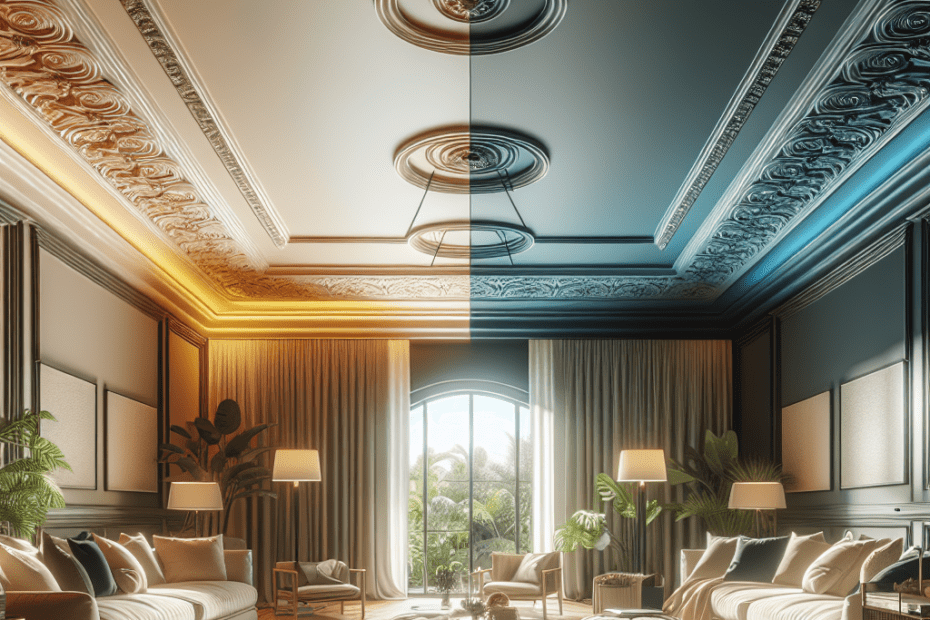The Impact of Ceiling Color on Room Perception
Many people do not realize just how much the color of a ceiling can change how a room feels. Though walls often take the spotlight, the ceiling holds a special place in room decor and design. People might feel different about a space based just on the ceiling color. Designers and psychologists agree that the ceiling can influence perceptions of space, mood, and even light. This article will explore the nuances of these effects and delve into how choosing the right ceiling color is crucial to achieving the desired atmosphere in any room.
The Basics of Ceiling Color Impact
Understanding the impact of ceiling color on room perception involves a few key considerations. Firstly, light colors tend to make a room feel more open and airy, while darker hues can create a more intimate or cozier vibe. According to a study by Color Psychology, rooms painted with lighter ceilings can appear up to 20% larger (Color Psychology, 2021).
Color Perception and Space
Ceiling colors can significantly alter how we perceive the space around us. Lighter shades, like white or pale creams, reflect more light. This reflection can give the impression of a higher ceiling, increasing the sense of space. On the other hand, darker shades can make ceilings seem lower, which might be desirable in creating a comfortable, snug environment.
| Ceiling Color | Spatial Perception |
|---|---|
| Light Colors (e.g., White, Beige) | Makes a room feel larger and open |
| Dark Colors (e.g., Navy, Charcoal) | Creates warmth and a cozy feel, but may seem smaller |
Psychological Effects of Ceiling Colors
Colors have a deep psychological impact on people, and this extends to colors used on ceilings. Cool colors—like blues and greens—might evoke feelings of calm and tranquility. Warm colors—such as yellows and reds—bring energy and vibrance. The Southern Managed website suggests that ceilings painted in calming tones like pale blue can reduce anxiety and promote relaxation, while more stimulating colors may activate the mind (Southern Managed, 2022).
Designing with Color
When choosing a ceiling color, consider the existing decor. A consistent color scheme helps harmonize room elements. Designers often use a lighter shade of wall color for the ceiling to create a harmonious effect. This approach not only maintains visual balance but also enhances the room’s aesthetic. Conversely, a bold ceiling can act as an accent feature, drawing attention upward and creating a focal point. This technique is particularly effective in dining rooms or home offices.
Practical Considerations
Ceiling colors impact both perception and practical elements like lighting. Lighter ceilings can help amplify natural light, cutting down on electricity use during the day. Approximately 15% of decorators report light ceiling colors helped reduce the need for lamps in rooms with adequate windows (Decor Magazine, 2023).
Key Takeaways
- Ceiling color significantly influences room perception, with lighter colors expanding space and darker hues creating intimacy.
- Psychological impacts of ceiling color can range from calming to stimulating, based on color temperature.
- Coordinating ceiling color with overall decor can enhance aesthetic appeal and visual harmony.
- Practical considerations include lighting enhancement, potentially impacting energy use.
FAQs
- How does ceiling color affect room size perception?
Lighter ceiling colors can make a room feel larger, while darker shades may create a cozier, more confined atmosphere. - What psychological effects can ceiling color have?
Some colors can calm the mind, like blues, while others, like reds, might energize a space. - Should ceiling color match wall color?
Not necessarily. Often, a lighter ceiling shade is used to contrast walls while maintaining visual appeal and harmony. - Can ceiling color impact lighting?
Yes, lighter ceiling colors can help reflect natural light, reducing dependency on artificial sources. - What rooms benefit most from bold ceiling colors?
Dining rooms and offices often use bold ceilings to create a focal point or highlight specific decor elements.
